| Srl | Item |
| 1 |
ID:
104429
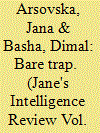

|
|
|
| 2 |
ID:
118868


|
|
|
| 3 |
ID:
129149
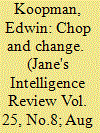

|
|
|
| 4 |
ID:
093131
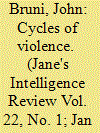

|
|
|
| 5 |
ID:
168385
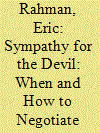

|
|
|
|
|
| Summary/Abstract |
Criminal gangs, while posing the most substantial threat to security in the Western hemisphere, fall outside the scope of contemporary studies in the field of mediation and negotiation. The prevailing wisdom that gangs are unmanageable due to their apolitical nature and the high political cost of dialogue has led to an approach that relies heavily on the security sector. While the security sector can and must play a role, confrontation alone has proven insufficient. The three-step theory presented in this article seeks to explain how and when to engage in dialogue as an alternative means of confronting criminal gangs. The success of this process, a reduction in violence and criminality through the transformation of gang-related conflict, hinges on sequencing and begins with state-sponsored mediation conducted in secret to establish a cease-fire between the gangs, then enters the phase of public negotiation between the state and the gangs, and finally concludes with a process of mainstreaming the reformed structures into society. This theory assumes that mediators can work with the gangs through a process of assisted articulation to develop a negotiating position, opening a zone of possible agreement between the government and the gangs. El Salvador offers a compelling example of how a society steeped in gang violence might pursue dialogue while also highlighting the threats posed to any negotiation.
|
|
|
|
|
|
|
|
|
|
|
|
|
|
|
|
| 6 |
ID:
132158
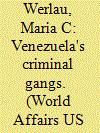

|
|
|
|
|
| Publication |
2014.
|
| Summary/Abstract |
When mass protests against the government erupted in Venezuela early in February, murder rates in the country were already shocking-close to twenty-five thousand people dead in the previous year, with ninety-seven percent of cases going unsolved. They would soon get worse, as motorcycle gangs in civilian clothes began attacking and shooting unarmed citizens, particularly youngsters, with the security forces standing by.
|
|
|
|
|
|
|
|
|
|
|
|
|
|
|
|
| 7 |
ID:
133284
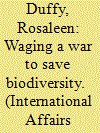

|
|
|
|
|
| Publication |
2014.
|
| Summary/Abstract |
This article examines the rise in militarized approaches towards conservation, as part of a new 'war for biodiversity'. This is a defining moment in the international politics of conservation and needs further examination. The claims that rhinos and elephants are under threat from highly organized criminal gangs of poachers shapes and determines conservation practice on the ground. Indeed, a central focus of the 2014 London Declaration on the Illegal Wildlife Trade is the strengthening of law enforcement, and recent policy statements by the US government and the Clinton Global Initiative also draw the link between poaching, global security and the need for greater levels of enforcement. Such statements and initiatives contribute substantially to the growing sense of a war for biodiversity. This article offers a critique of that argument, essentially by asking how we define poachers, and if militarized approaches mean conservationists are becoming more willing to engage in coercive, repressive policies that are ultimately counterproductive. Further, this article examines how the new war for biodiversity is justified and promoted by referring to wider debates about intervention in a post-Cold War era; notably that the international community has a responsibility towards wildlife, especially endangered species, and that military forms of intervention may be required to save them.
|
|
|
|
|
|
|
|
|
|
|
|
|
|
|
|